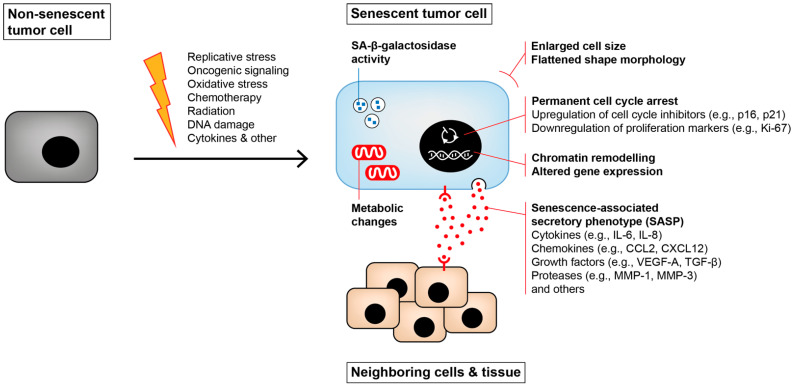Figure 4.
Senescence induction and its impact on neighboring cells. After encountering a senescence trigger (orange lightning), the cells start to change. They adopt a flattened morphology and enlarge in size. Besides being growth-arrested, the cells show increased activity of the senescence-associated β-galactosidase (SA-β-gal), metabolic changes, chromatin remodeling and an altered gene expression, including the formation of a senescence-associated secretory phenotype (SASP). This SASP then acts in an autocrine or paracrine manner, influencing the senescent cells themselves as well as neighboring cells in the tissue.

